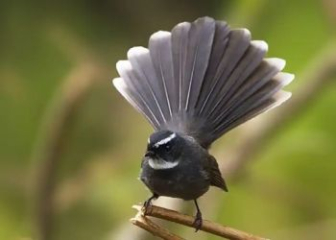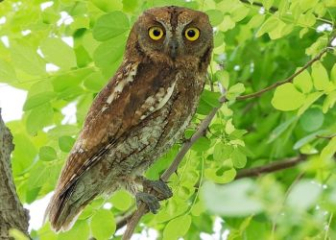Nightingale - Instructions for raising beautiful, singing birds from A to Z
Blog | by
The nightingale has a clear, resonant voice and an impressive appearance with characteristic white-rimmed eyes. It is one of the four favorite ornamental birds in Vietnam.
The Nightingale (scientific name: Garrulax canorus) is known as a top “singer” in the world of ornamental birds. With a clear, powerful singing voice and a rustic but attractive appearance, especially the eyes painted with a white border like eyeliner, this bird has captivated many bird lovers. The Nightingale is also one of the “four noble ornamental birds” of Vietnam.
If you want to really understand the origin, habits and how to take care of beautiful, singing nightingales, follow the article shared by nicebirds below!
Information about nightingale:
|
Scientific name |
Garrulax canorus |
|
Other names |
Nightingale |
|
Set |
Passeriformes - Order Passeriformes |
|
Surname |
Leiothrichidae - Goldfinch |
|
Origin, distribution |
East Asia |
|
Size |
20 - 25 cm |
|
Lifespan |
3 - 5 years |
|
Behavior |
Strongly territorial, quite aggressive |
Origin and distribution of nightingale
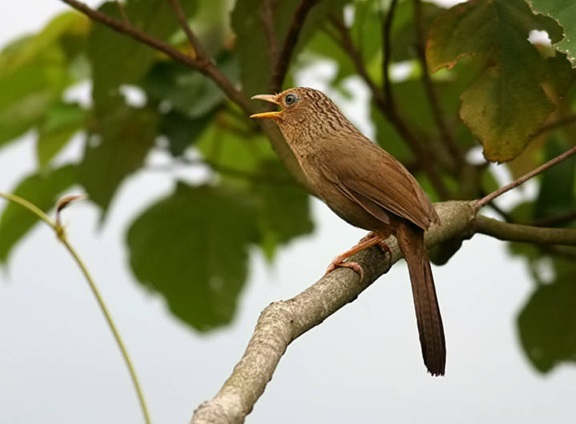
A nightingale is perched on a high branch.
Nightingale (scientific name is Garrulax canorus), originates from the mountainous regions of East Asia, where the climate is cool temperate, specifically the following areas:
- Vietnam : Northern mountainous provinces such as Lang Son, Lao Cai, Ha Giang, Yen Bai, Son La,...
- China: Yunnan, Guizhou, Sichuan,...
- Myanmar (Burma)
- Laos
- Thailand
Thanks to its impressive appearance and gifted singing voice, the nightingale is one of the most popular ornamental birds in Vietnam and is considered one of the "four noble ornamental birds" along with the red-whiskered bulbul, the thrush and the lark.
The name “Thrush” comes from the Chinese word “畫眉” which means “drawing eyebrows”, referring to the prominent white border around the thrush’s eyes that looks like it was drawn with a pen, looking very unique.
Physical characteristics and how to distinguish between male and female nightingales
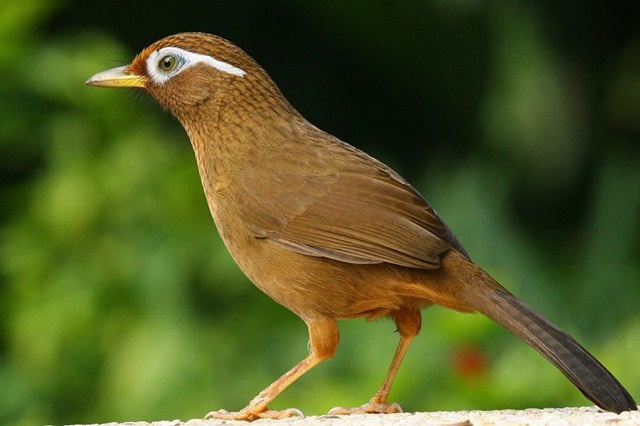
The appearance is rustic but has the highlight of a nightingale.
Nightingale appearance
The nightingale is one of the pet birds with a rustic but attractive appearance, especially the eyes that look like they are drawn with delicate “white eyeliner”. Let’s find out more about the appearance of this bird!
- Size: 20 - 25 cm
- Weight : 50 - 75 g
- Shape : Slender, balanced.
- Head : Small, slightly round
- Eyes : There is a distinct white border around the eyelids, like painted eyebrows, which is also a characteristic of this bird species.
- Beak : Pointed, thin but hard.
- Feathers : Mainly earthy brown or grayish brown, looks very smooth. Back, wings, tail are darker, chest and belly are lighter.
- Tail : Long, tapered
- Legs : Medium length, light grey or light pink, sharp, pointed nails.
How to distinguish between male and female nightingales
Below is the most detailed and complete way to distinguish between male and female nightingales. Let's learn more!
|
Comparison factor |
Male nightingale |
Nightingale |
|
Size, shape |
Bigger than the female Bigger, more muscular body Head, neck, chest look thicker |
Smaller than male bird Slimmer, more slender body |
|
Coat color |
Darker brown than the female. |
Lighter brown |
|
singing voice |
The voice is clear, deep, and often sings continuously and clearly. |
Weaker voice, less humming, often only short calls |
|
Behavior |
Highly territorial Sing to attract females and express yourself |
More gentle, less aggressive Sings little, only when needed |
Characteristics of the Nightingale
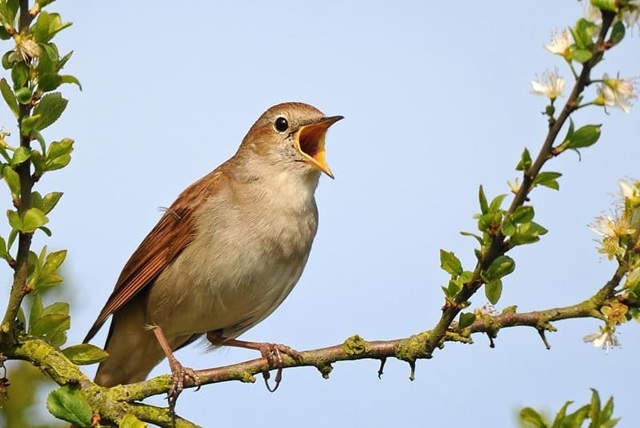
A nightingale is singing loudly.
Let's learn in detail about the habits of the Nightingale to understand its habits and behavior and take better care of this bird!
Strong territoriality
Nightingales are very territorial birds, especially males. They will show aggressive behavior, ready to threaten or fight with strange birds that invade their living area.
High alertness
Nightingales are also very sensitive to changes in their environment. They are always alert to the appearance of strange birds or strange impacts. This is also the reason why this bird often flies very quickly when it sees people or other animals approaching.
Like to live alone
Nightingales usually live alone or in pairs during the breeding season. They do not like to gather in large flocks like many other small birds.
Is an omnivorous bird
Nightingales are omnivorous birds, they can eat insects, fruits, and seeds. They are usually active during the day, from early morning to late afternoon. They only hang around in low tree canopies or on the ground, rarely flying high or far.
Voice communication
The most special feature of the nightingale is probably its rich, melodious voice with many different melodies, often singing in the early morning and late afternoon. Besides, they also have the ability to imitate the calls of other birds.
This bird often uses its song to attract mates, express itself, assert territory or threaten enemies.
Techniques for raising beautiful, well-singing nightingales
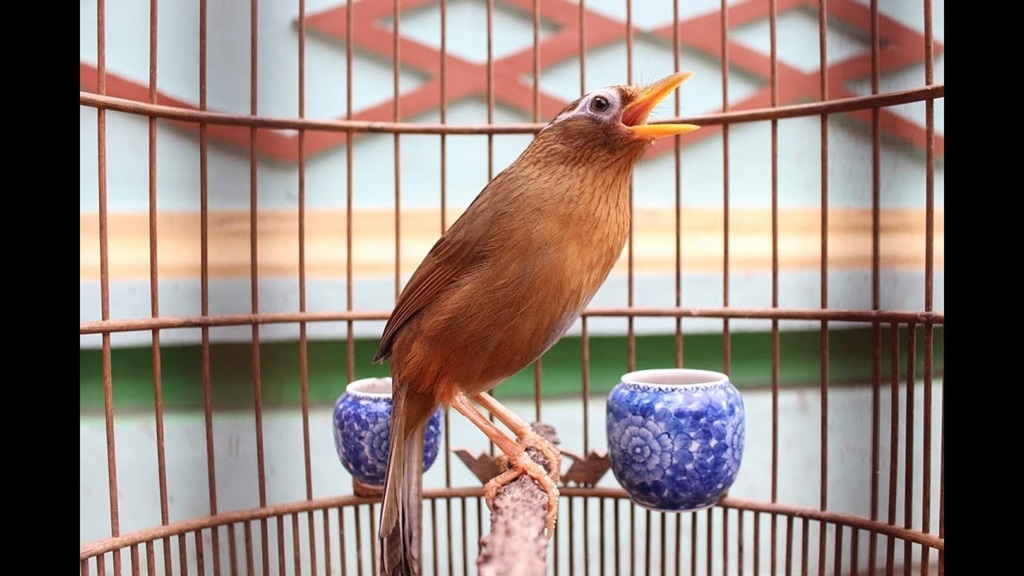
Image of a nightingale raised in a bamboo cage.
Raising a nightingale with a beautiful appearance and a good singing voice is not simple, it requires investment in time and technique. If you want to succeed from the first time, do not ignore the valuable experiences and techniques shared below.
Choose the right cage
Choosing the right cage is a very important factor that helps nightingales develop well, have a beautiful appearance and a good singing voice because only when living in a comfortable environment can they fully demonstrate their "skills", right?
When designing a bird cage, you should keep in mind the following:
- Cage type : Round or oval cage, diameter from 30 - 35 cm, moderately spaced bars to prevent birds from escaping.
- Cage material : Should use bamboo or wooden cage, avoid metal cage.
- Necessary equipment : Sturdy water and food trough, round perch covered with cloth or dry pandan leaves so the bird has a place to sleep at night.
- Cage location : Place in a cool, quiet place, away from smoke, dust, and strong light.
Balanced diet
Another key factor that determines whether a bird sings well and is healthy or not is its diet. If you want them to have the clearest singing voice, feed them the following foods!
- Main food : Bran specifically for nightingales, insects such as grasshoppers, locusts, crickets, and mealworms.
- Supplementary food : Ripe bananas, ripe papaya, oranges, green vegetables, crushed boiled eggs,...
- Drinking water : Use clean, chlorine-free water, change daily.
Sunbathe and bathe regularly
Nightingales love to sunbathe and bathe in water. You can bathe them at the following frequency.
- Sunbathing : Every morning from 7am to 9am, bathe for about 20-30 minutes. The light not only helps birds become healthy but also reduces parasites.
- Bathing : Give the bird a bath 3-4 times a week in the early morning and then let it sunbathe.
Practice singing every day
An important thing to help nightingales sing well is to practice their voice every day. You can use decoy birds, play the bird's voice on your phone, CD or create a "virtual" opponent... Specifically as follows:
- Using decoy birds: You can hang birds near birds that already have good singing voices so that the birds can imitate and sing along.
- Use a sample bird voice on a phone or CD: Turn on the standard nightingale singing sound, or let the bird listen every day, for a maximum of 30 minutes.
- Create a “virtual” rival: Use a mirror hung near the nightingale cage to make it think it sees a “rival”, thereby stimulating its territorial instincts, causing it to sing more.
Common diseases in nightingales and how to treat them
When raised in cages, nightingales are susceptible to some common diseases such as diarrhea, parasites or respiratory infections due to lack of optimal care. Let's learn more about these diseases to know how to handle and treat them promptly.
|
Disease name |
Reason |
Symptom |
How to handle and treat |
|
Diarrhea |
Spoiled food, dirty water Cold and wet weather |
Bird droppings are thin, white, slimy, and have an unpleasant odor. Birds are lazy and ruffled. |
Stop feeding the bird fresh food, only feed dry food Give the bird electrolyte replacement drink. Digestive enzymes may be given as directed by your veterinarian. Clean bird cage |
|
Parasites (ticks, lice, etc.) |
Dirty cage, birds rarely sunbathe and bathe in water Infected from the same kind |
Birds preen their feathers. Abnormal hair loss Observe lice and ticks crawling on the skin |
Clean the cage Bathe the bird with diluted salt water or boiled and cooled lemongrass water. Use specialized lice medicine for birds. Sunbathe and bathe regularly. |
|
Respiratory tract infection |
Birds are cold Place the cage in a place with strong winds. |
Birds wheeze or open their beaks when breathing. Birds sing weakly, lazy to sing |
Keep the bird warm, cover the cage with a towel at night. Do not bathe the bird while it is sick. If the bird shows signs of serious illness, consult a veterinarian. |
|
Abnormal hair loss |
Lack of nutrients, stressed birds Shock due to change in living environment |
Hair loss in patches Birds are tired, lethargic, stop eating,... |
Add vitamins to your diet. Increase bird feeding of fruits and grasshoppers Sunbathe regularly |
How much is a nightingale?
Currently, the price of nightingales in the Vietnamese bird market fluctuates quite a lot, depending on the age, purity, singing voice and appearance of the bird. If you want to buy a nightingale, you can refer to the following price list!
|
Nightingale |
Reference price (VND/piece) |
Characteristic |
|
Young nightingale |
300,000 - 600,000 |
Young bird, not domesticated |
|
Wood thrush |
1,200,000 - 2,000,000 |
Newly trapped bird, not tamed |
|
Pure nightingale, sings well |
2,500,000 - 4,000,000 |
The bird is tame, sings well, and is stable. |
|
Nightingale Fight |
Over 5,000,000 |
Trained birds that have won prizes in competitions |
Note:
- Although woodpeckers are healthy and adaptable, they need experienced breeders to tame them.
- Fighting birds are only for professional players, specializing in participating in tournaments.
- You can refer to more information about the price of nightingales on e-commerce sites such as Cho Tot, Shopee or Facebook groups such as "Hoi mua ban chim thrush",... to update the latest price.
Questions and answers about nightingales
How long do nightingales live?
On average, nightingales can live from 3 to 5 years if kept in a suitable environment.
What color are nightingale eggs?
Typically, thrush eggs are light blue with black spots.
Where do nightingales usually nest?
Depending on the species of nightingale, they have different nesting places. Black and white nightingales nest on the ground, MacGillivray nightingales nest in bushes,...
What does the nightingale mean?
According to the concept of many countries, the nightingale symbolizes joy, optimism and hope.
Beautiful nightingale pictures
We invite you to admire some of the most beautiful and impressive images of nightingales that we have collected below. We guarantee you will love it!
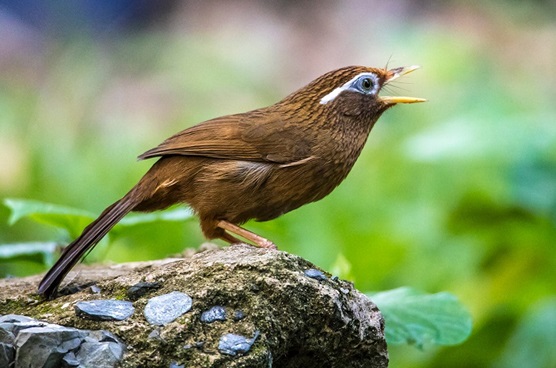
A nightingale is standing on a rock.
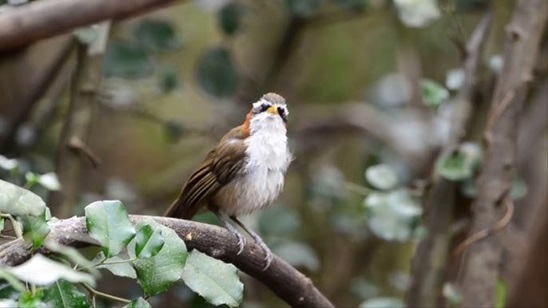
Image of nightingale singing.
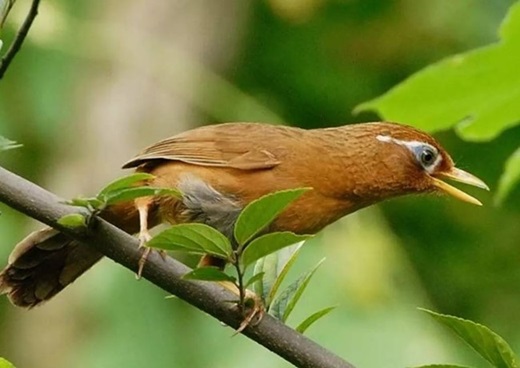
A cuckoo bird is looking around for food.
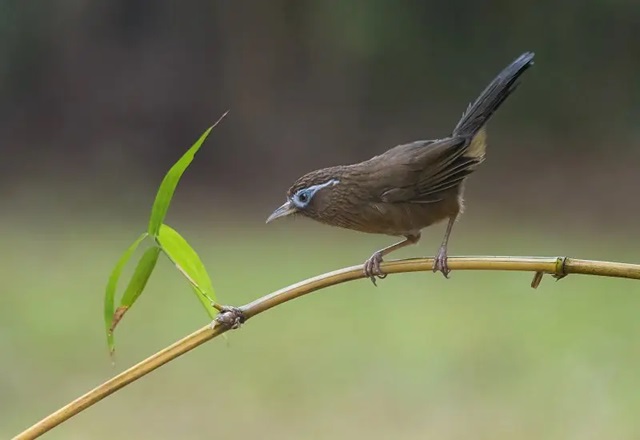
Image of a nightingale with a graceful body.
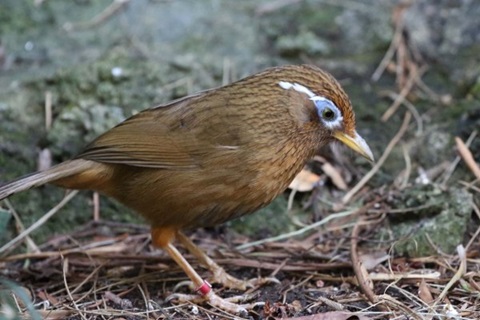
A nightingale is foraging on the ground.
Through the information that nicebirds.net shares in the above article, it can be seen that the Nightingale is not only a simple, unique ornamental bird but also possesses a very beautiful, captivating singing voice.
If you like listening to birds singing but don't like colorful birds, then Nightingale is not a bad suggestion.
Don't forget to visit our Blog section every day to learn more about other special and interesting bird species!

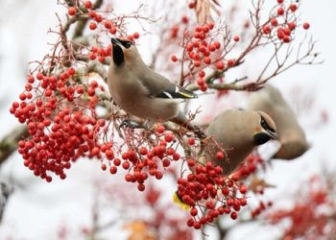

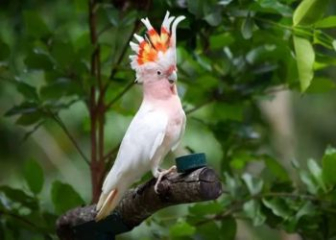

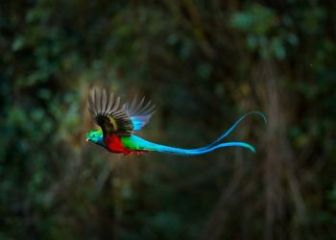





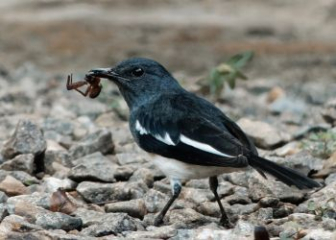
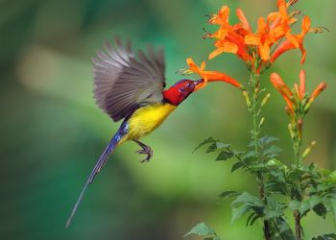


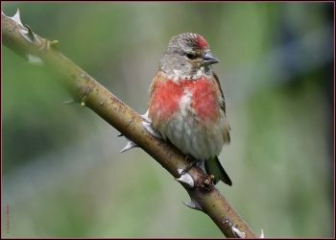
_350x250.jpg)
